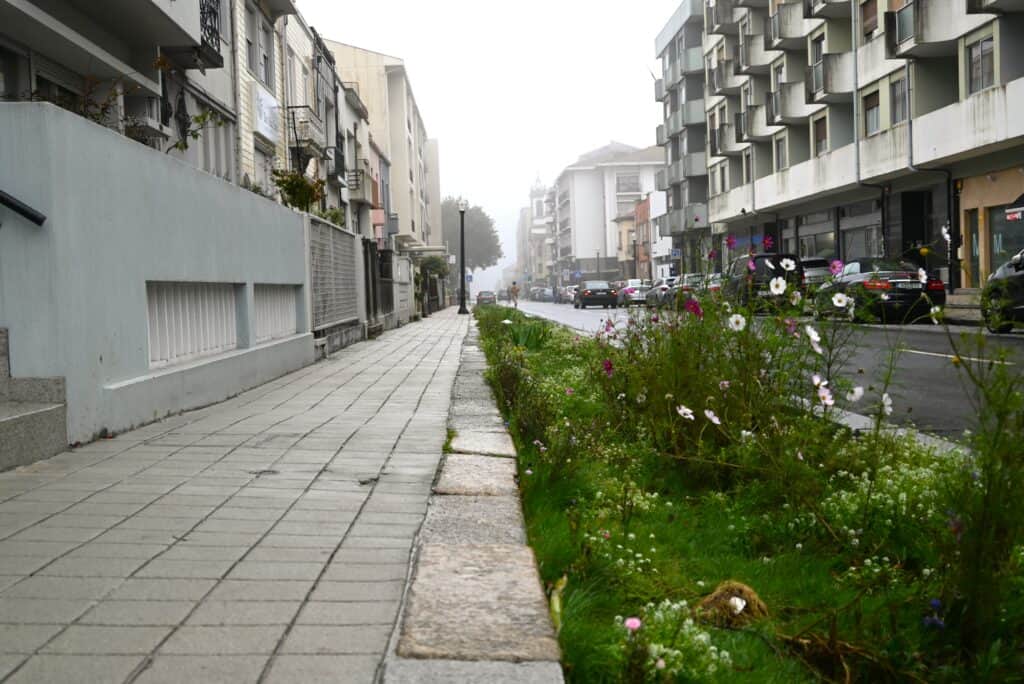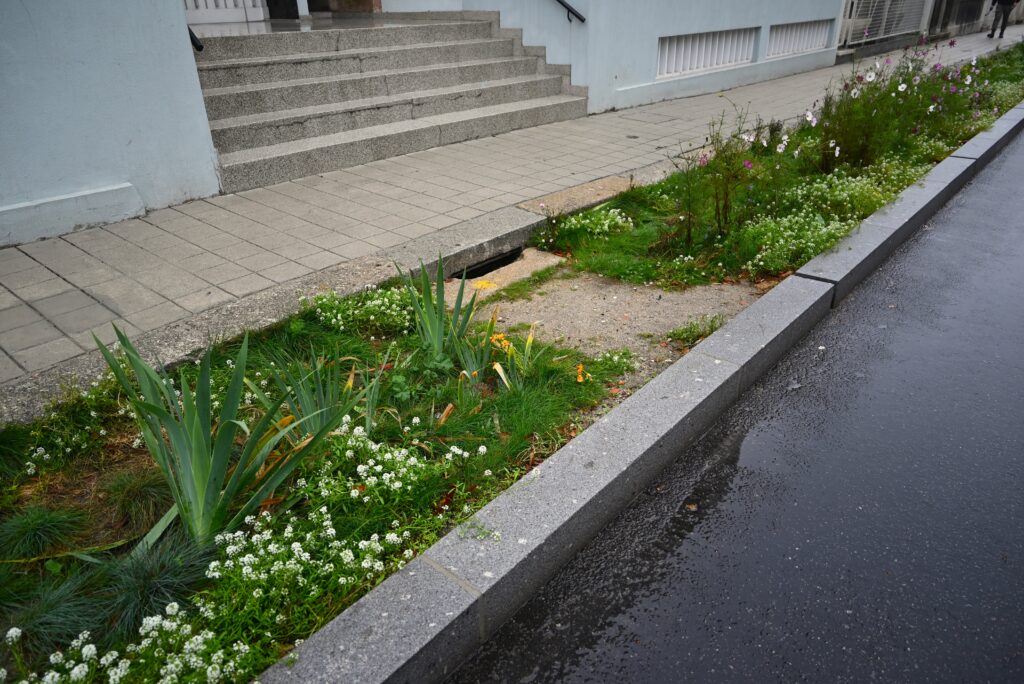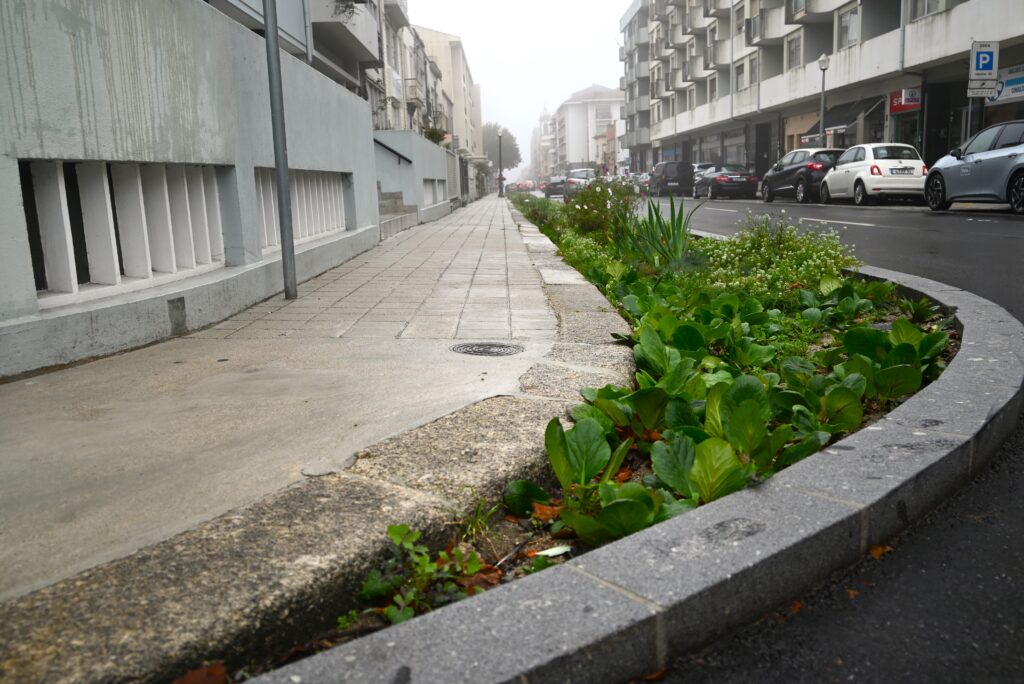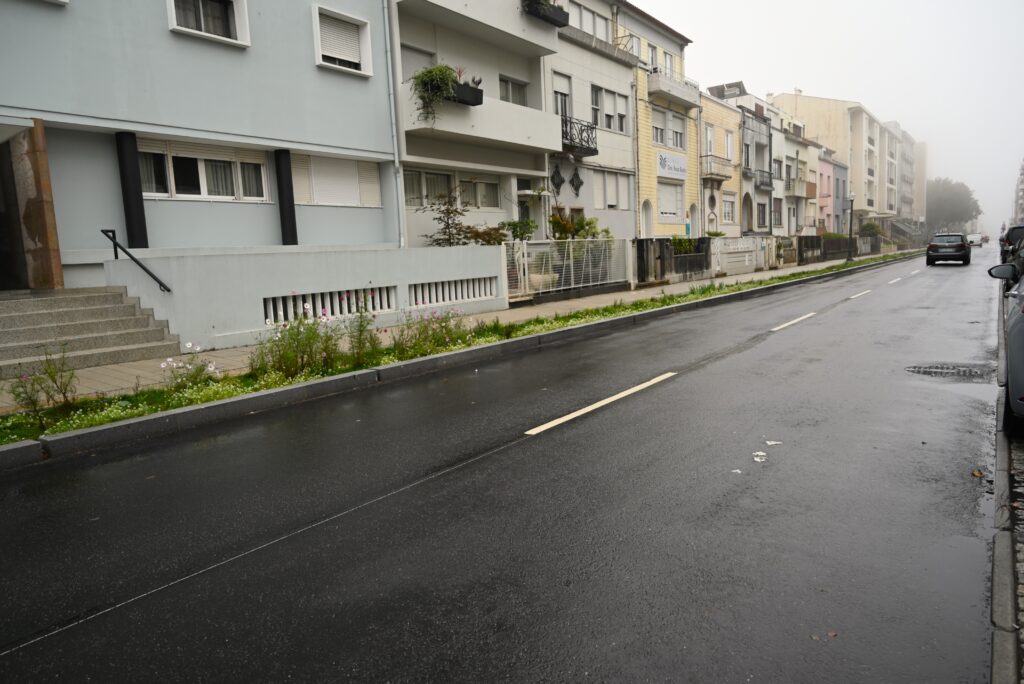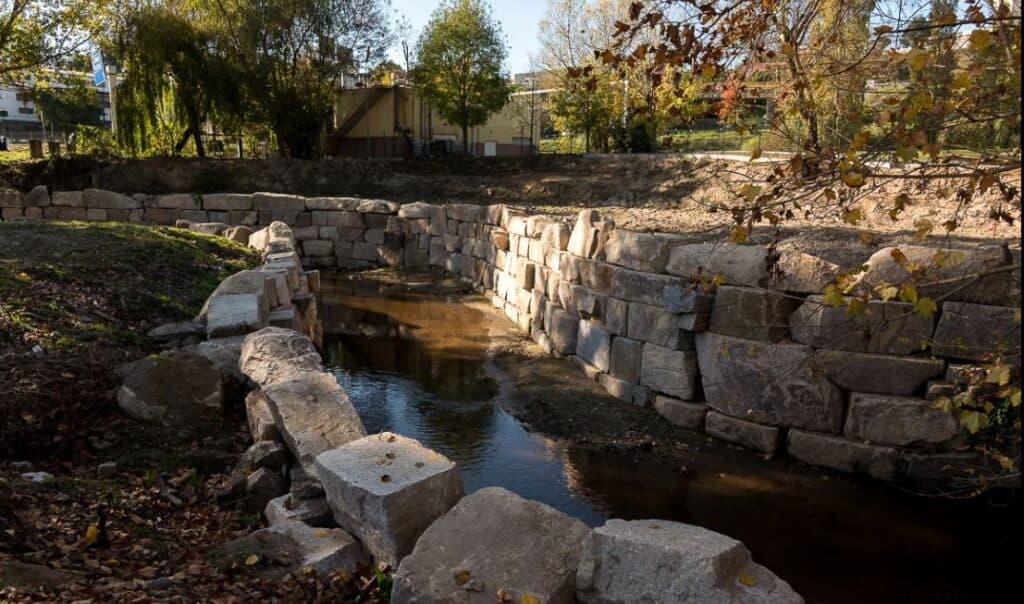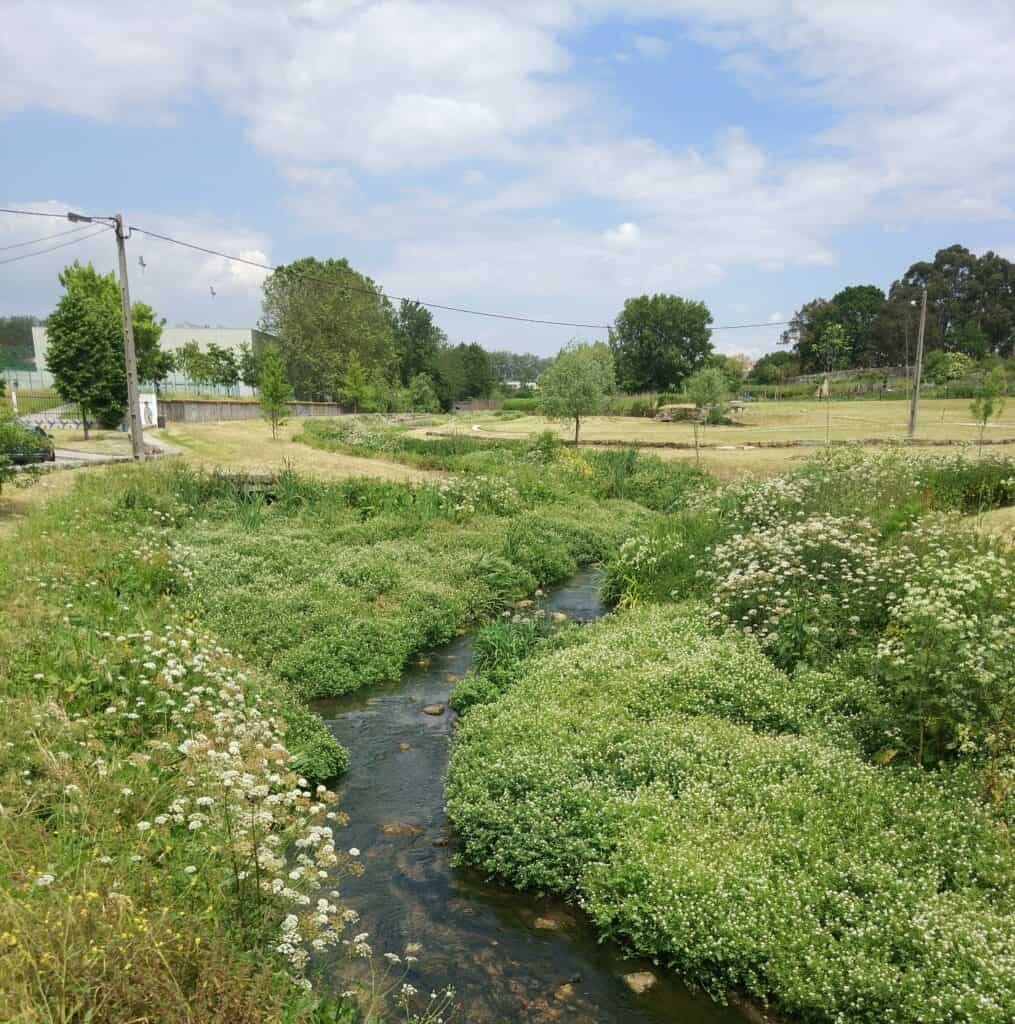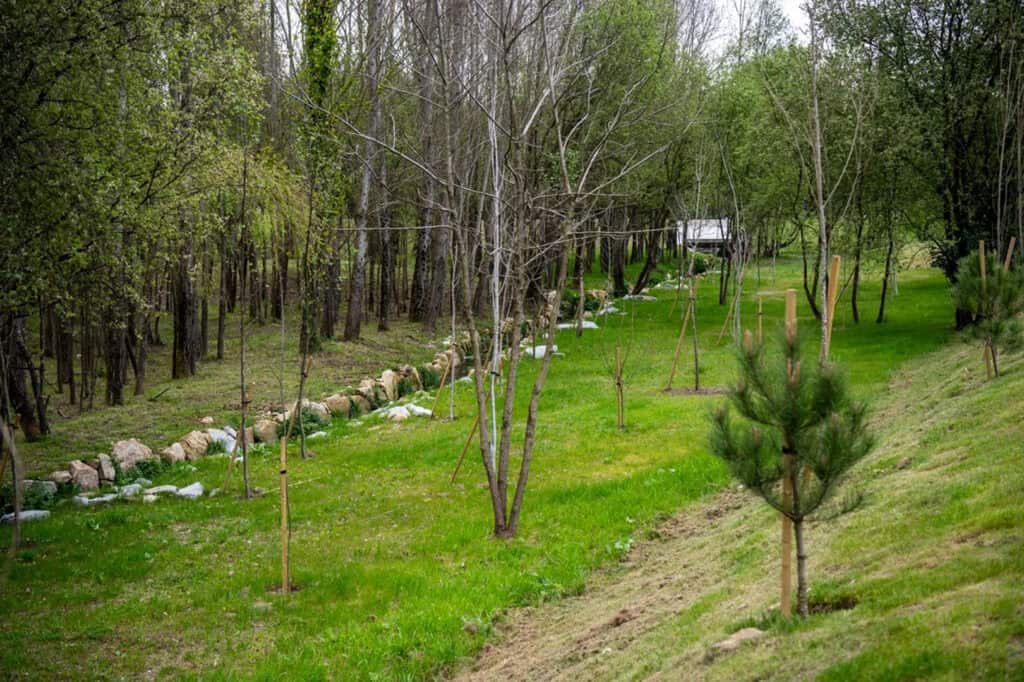As part of the street improvement works carried out by the municipal company GOPorto, a Sustainable Urban Drainage System (SUDS) – rain garden – was installed to collect rainwater from the roadway and sidewalk.
This green strip improves the well-being and safety of pedestrians, pre-treats the rainwater to be delivered to the Poço das Patas stream, enhances its infiltration, and simultaneously contributes to the resilience and sustainability of water resources and the public drainage network. In addition, in cases of extreme rainfall, all the water retained in the rain garden prevents water from accumulating in the Poço das Patas stream (a fully piped watercourse), thus avoiding urban flooding in the Campo 24 de Agosto area.
Some of the interventions were identified in the Plano de Valorização e Reabilitação das Linhas de Água do Município do Porto (PVRLA), which aims to promote the protection and valorization of the rivers and streams of the city of Porto with a view to better adaptation to the effects of climate change. The plan will be followed by a wider project – Porto + Permeável – through which many of the measures presented will be implemented.
